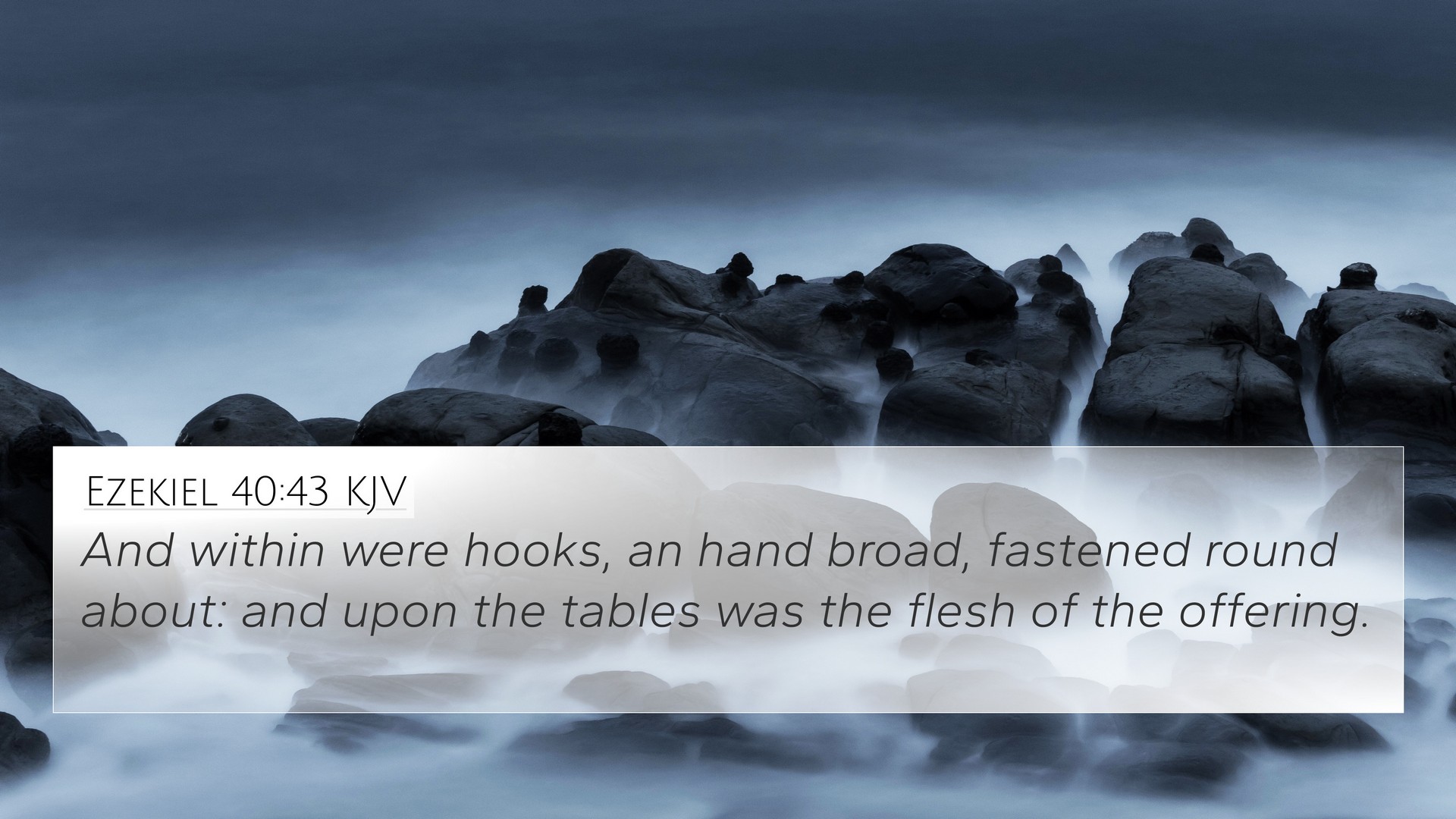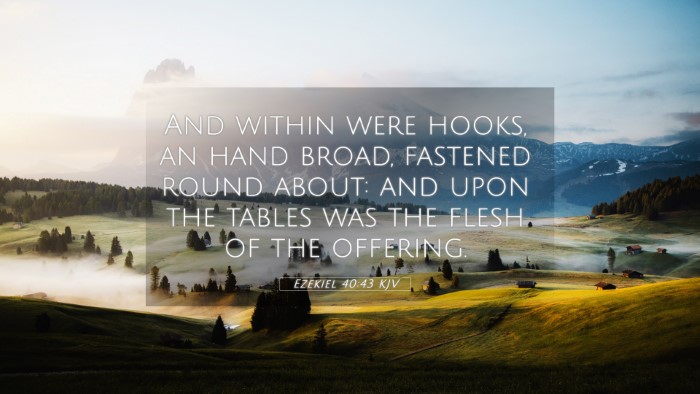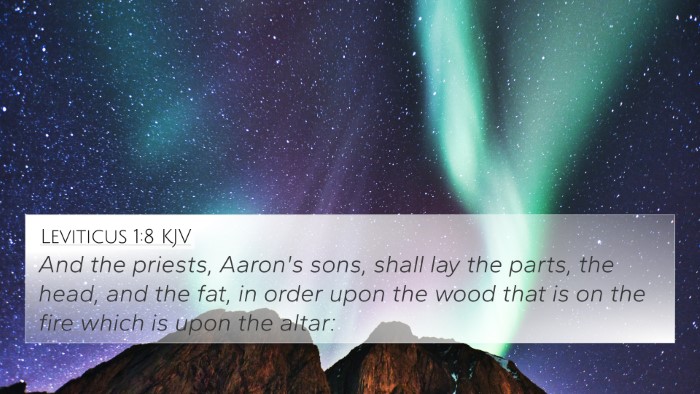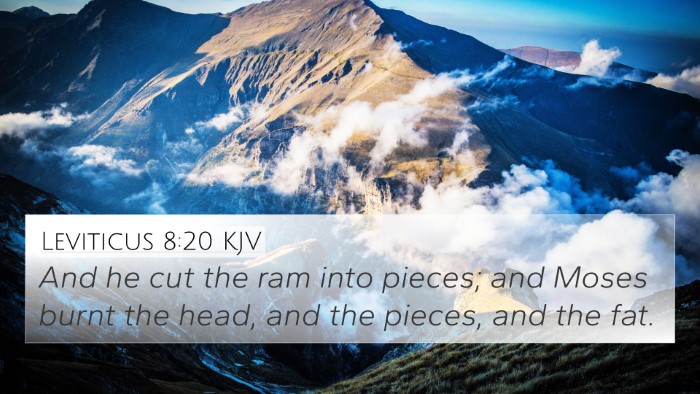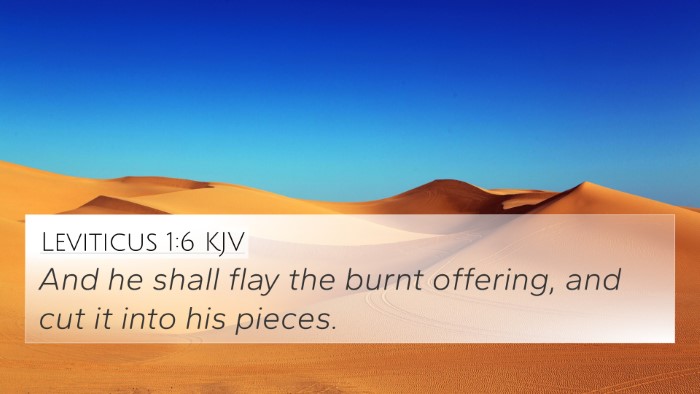Ezekiel 40:43 - Summary and Interpretation
Ezekiel 40:43 states: "And within were hooks, a handbreadth long, fastened round about; and upon the tables was the flesh of the offering." This verse is part of Ezekiel's vision of a restored temple and provides insight into the worship practices that would take place there. The mention of "hooks" may symbolize completeness and sanctity in sacrificial offerings.
Key Themes and Insights
- The Nature of Sacrifice: The hooks signify the organized structure of sacrificial rites, pointing to the importance of order in worship.
- Understanding Offerings: The flesh of the offering signifies the physical representation of ritualistic exchanges between the worshiper and God.
- Divine Instruction: This imagery aligns with God's divine instructions for worship, emphasizing the significance of purity and precision in sacrificial practices.
Commentary Excerpts
Matthew Henry: Henry emphasizes the meticulousness required in the offerings, indicating that the offerings must be prepared with precision for them to be accepted by God. The hooks symbolize God's provision and the idea that everything in worship is under His control.
Albert Barnes: Barnes elaborates on the design of the temple, suggesting that the physical arrangements played a critical role in enhancing the spiritual experience of worship. He points out that these elements serve as types and shadows for deeper New Testament truths.
Adam Clarke: Clarke discusses the practical implications of the verse, noting how the details in the temple vision demonstrate God's desire for order and reverence in worship. He connects these practices back to the heart of worship, where the offerings represented believers' dedication and obedience.
Cross-References for Ezekiel 40:43
- Leviticus 1:6-9: Discusses the preparation of offerings and the importance of following God's commandments in sacrificial rituals.
- Hebrews 10:1-4: Illustrates how Old Testament sacrifices are a shadow of Christ’s ultimate sacrifice.
- Exodus 27:3: References hooks and the intentional design utilized in God’s instructions for the altar.
- Revelation 8:3: Connects to the incense offerings in heaven, emphasizing the continuity of worship from Old Testament practices to New Testament fulfillment.
- 1 Peter 2:5: Expounds on believers as living stones, representing a spiritual house for sacrificial offerings beyond the physical temple.
- Malachi 1:13-14: Addresses the need for honoring God with our best offerings, reinforcing the importance of purity in worship.
- Romans 12:1: Calls believers to present their bodies as living sacrifices, drawing parallels between the physical and spiritual aspects of worship.
Analytical Framework
The examination of Ezekiel 40:43 enables us to identify thematic connections between the Old and New Testaments, particularly regarding temple worship and the significance of sacrifice.
Identifying Connections Between Verses
By understanding Ezekiel 40:43 in its context, we open dialogues with several Biblical themes:
- The theme of sacrifice reflects throughout scripture, showing the transition from physical offerings to spiritual dedications.
- Connections between Old Testament sacrificial systems and New Testament teachings illustrate God's progressive revelation.
- This verse prompts questions about how modern believers can apply the principles of divine order and reverence in their worship today.
Conclusion
Ezekiel 40:43 serves as a vital part of understanding the temple's role in worship and how sacrifices were vital to the interpersonal relationship between God and His people. The hooks signify a call to order and cleanliness in offerings, representing broader themes of spiritual dedication. As we explore the cross-references, a clearer picture emerges of God's desire for worship that is both heartfelt and orderly, thereby enriching our understanding of scripture as it connects through time.
